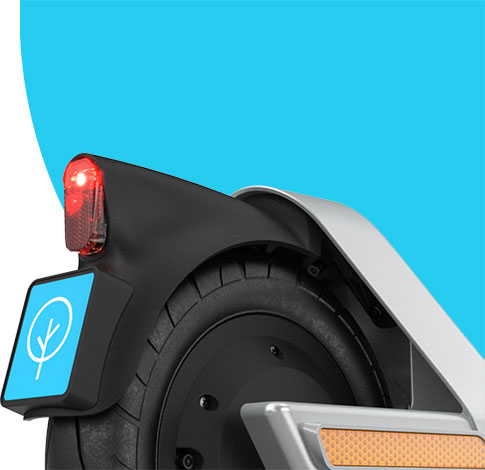Bird’s Sustainable Impact

We are getting people out of cars exponentially faster than anything before the advent of shared e-scooters, helping cities get closer to their sustainable transport goals. So while car companies commit to slow-roll the integration of electric vehicles over the next two decades, Bird is changing transportation to improve our climate health right now.
What’s more, we want to go the extra mile (so to speak) and make sure that we aren’t just delivering a product that is climate-conscious, but that the ways in which we offer that product and bring it into the world are climate-conscious as well.
Bird has gone to great lengths, even as a very young company, to be sustainable in how we provide our already sustainable offerings. To learn more about the work Bird has done in this regard, we created a tip sheet to help answer all your burning questions about our approach to sustainability.
How do e-scooters help fight climate change?
Passenger transport is one of the leading contributors to climate change. Cities around the world have long been looking for ways to encourage people to drive less, but greenhouse gas emissions have been going up and up. If cities can get people to use transit, walk, bike, or scoot for the majority of their travel needs, then this, combined with the use of hybrid or electric cars for trips that can’t be made with a sustainable mode, will decarbonize transport.
We know that Bird scooters are already having a positive environmental impact. It varies city to city, but we’re consistently seeing that between 30-50% of scooter trips would have otherwise been made by car, and there’s so much room for more trips to be taken by scooter: almost half of all car trips are three miles or less. These vehicles are incredibly efficient and can travel about 30 miles on a single charge. As our app and vehicle improve more and more, and we’re able to partner with cities to nest scooters across a city, people will increasingly rely on them.
But what about lifespan? How long does a scooter last?
When we first launched, the vehicles we used lasted three or four months on average. But we studied what was working and what wasn’t, and we’ve put that intel toward improving.
In 2018, we introduced the industry’s first scooter designed and engineered specifically for the sharing market, Bird Zero. Resulting from the commercial-grade aspects of Bird Zero, it lasts over 10 months in the sharing environment on average and is now profitable due to its increased lifespan and battery capacity. Then we introduced Bird One, which builds on the benefits and learnings of Bird Zero and is forecasted to last in the sharing environment for well over a year. Bird Two, announced last week, will last even longer.
In addition to designing a better vehicle, we’ve also added service centers in all of our cities. Birds receive regular maintenance, which prolongs their life and helps ensure they’re in good working order for our riders.
How does Bird think about sustainability?
This company is constantly innovating, and that includes finding new solutions to reduce our environmental footprint.
The biggest sustainability gain we could have is to replace more car trips — so we’re focused on ensuring our riders have the best experience possible so they continue to choose a Bird over a car. The other side of this, of course, is working with our city partners to share data and tools that help them to build more connected and protected greenlanes. The safer riders feel on the road, the more likely they are to embrace micro-mobility options.
The second most important thing is ensuring our vehicles last a long time and that their parts are reused or recycled. The lifespan of some scooters has called into question the sustainability of scooter companies — but at Bird, we have created our own scooters that last longer and longer with every new generation we introduce. Furthermore, when one of our scooters is decommissioned, we reuse the parts to repair other scooters. Those parts that can’t be reused are responsibly recycled.
Does Bird buy carbon offsets?
We are committed to making Bird rides carbon neutral. Our e-scooters are charged using a regular wall outlet. Bird estimates the total direct energy (in megawatt-hours) used to charge e-scooters and matches them with high quality, zero-emissions renewable energy certificates (RECs). To mitigate greenhouse gases associated with Bird pick-up and drop-off, we’ve purchased carbon offsets, which fund projects that ensure additional GHGs are not released into our atmosphere.
Is the e-scooter industry held to the same standards of sustainability as the transportation industry writ large?
No — which is a big part of the reason why we got here. But Bird is doing everything we can to do our part and make a difference where others are not. We very much hope the legacy transportation companies join us and help put back the pieces of our planet that have been devastated by our addiction to cars.
